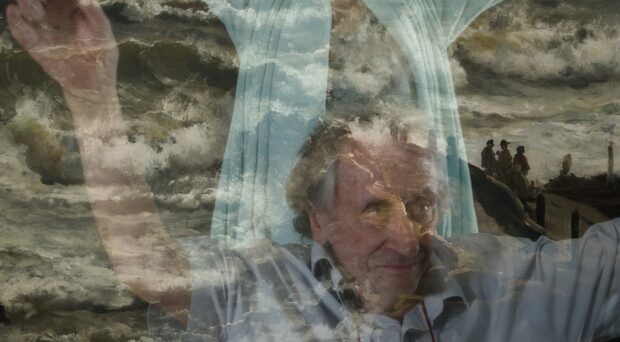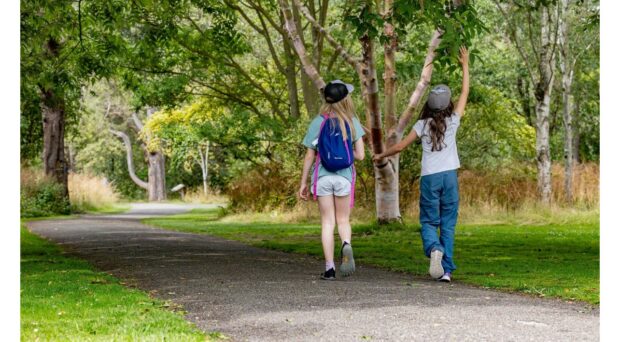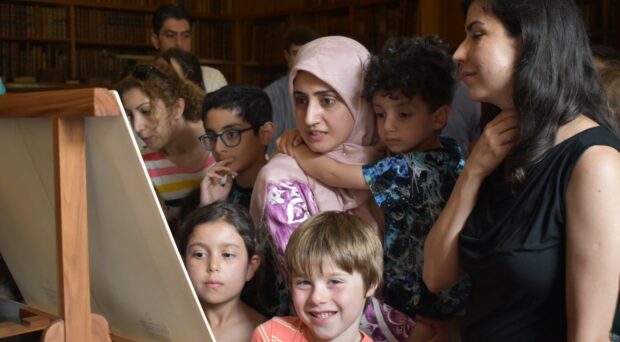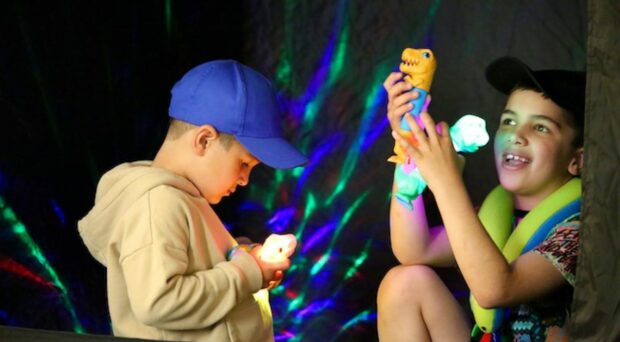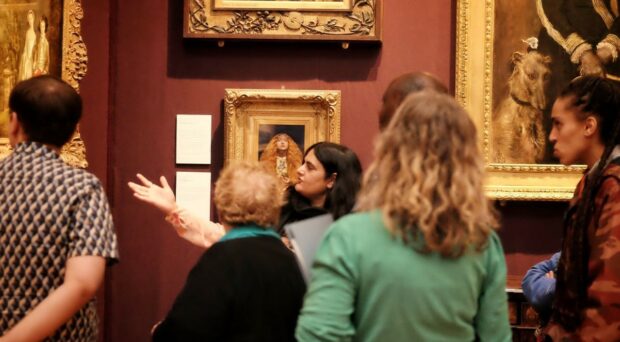Dance and Time with the Museum began in 2016 as a partnership between the University of Cambridge Museums and residents from the Cambridge City Council Sheltered Housing Schemes and the Independent Living Service (ILS), working with Filipa Pereira-Stubbs, an independent dance artist.
The ethos behind the programme was to provide an opportunity for residents to come together and have a shared experience, where they are guided through gentle movement into slow looking and discussion and they are encouraged to express their own ideas and feelings about an individual artwork. This practice would take place alternately at the Fitzwilliam Museum and within their community spaces.
Due to the current pandemic, when lock down was announced the team discussed how we would maintain contact, how we could reach out and engage with the residents on this established programme, now we could no longer get together. We recognised our participants were likely to be amongst the most isolated and vulnerable groups within our communities, as their age and, for many, underlying health issues put them in the high risk category for self-isolating. In the first week of lock down, we chose 24 paintings from the Museum collection, landscapes and portraits, some familiar favourites and many new to the groups, which we considered would provoke curiosity, imagination and lively conversations. 200 copies of each image were printed and A4 packs of the paintings were sent out to all the individual residents. Straight away participants responded to tell us that these were greatly appreciated.
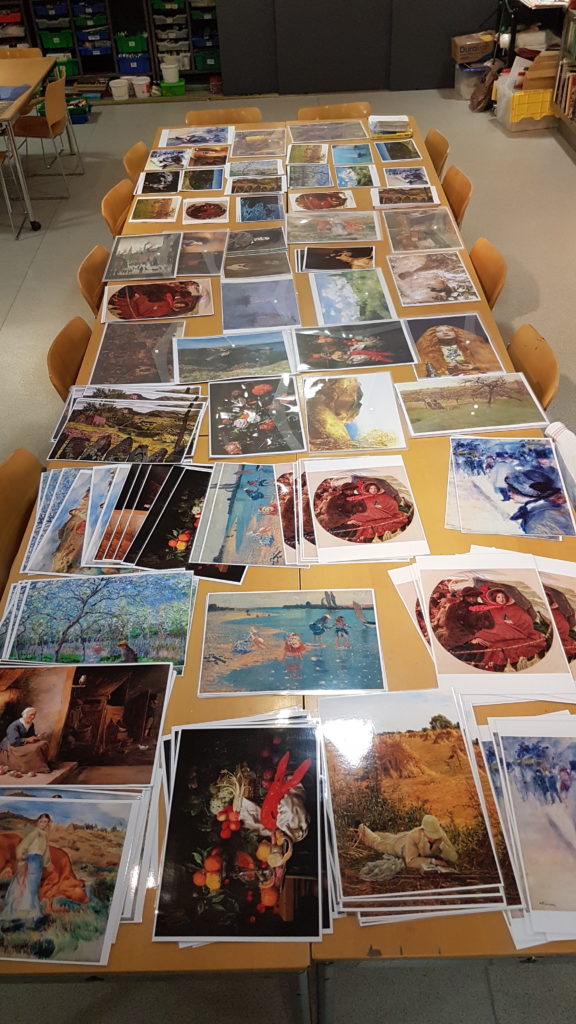
Discussion with the team who support the Sheltered Housing and ILS groups, and with participants themselves, helped us appreciate that most residents did not have access to digital devices, but all did have a phone. An invitation was made to each individual to take part in a small group conference call with us and managed by the Phone Co-op. The response to this invitation was extremely positive with many of the 80 residents previously participating in the Dance at the Museum programme accepting the invitation.
A great deal of discussion went into how best to deliver the sessions by phone, group size, how long the calls should be, how often and how we would record the conversations and ensure that the residents were properly supported and safeguarding issues addressed. These discussions resulted in the following programme; each conference call group has four to five residents, who all know each other, usually one person from the ILS team and two of us from the Dance at the Museum team, one to facilitate and one to write a diary of the collective experience. Having a person from the ILS team join us in the calls is a valuable way for them to keep in touch with the residents they know so well, whilst providing an important point of call for any safeguarding concerns that may arise. Each group gets to participate in a 40 minute long conference call every 2 weeks. All received a programme indicating the dates and times that they would participate, and a choice of 2 images to look at in each session, all the paintings are numbered and named.
We wanted the sessions to reflect and feel familiar in relation to those delivered in their community spaces, or at the Museum. So the framework follows a similar format, beginning with ensuring everyone is sitting comfortably before being guided through gentle movement, ensuring people are relaxed and have a physical experience which settles them into the space. This is followed by taking the group into the artwork, exploring the colours and textures of the paint and describing the image in a way that provokes enquiry, curiosity and imagination. The participants are then invited to share their thoughts and feelings about the painting; this then becomes a dialogue, sparking different and shared ideas and experiences within the group. We deliberately leave sharing the art historical information about the painting and the artist, until near the end of the session. This is to ensure that the enquiry through curiosity and imagination is very much led by the group and they are often surprised by the reveal.

The telephone conference calls begin with the Phone Co-op phoning each person, starting with the Museum team before the residents are brought into the call and introduced by name as they join the group. The team member leading the session gives everyone a warm welcome, informs them of who else is in the call and asks how everyone is. It is important to allow the time and space for everyone to say hello to each other. Participants express how lovely it is to hear each other’s voices and often say they miss not seeing each other and going out on trips together. As the weeks progress, we are now in week 7 of the conference calls, it has become increasingly important to share how they are feeling, a genuine expression of feeling trapped, fed up, bored, which they can all identify with. But they are always quick to move into the session, into the art work, they genuinely value the importance of being connected with each other and through the shared experience of looking and discussing art, and the transformative effect it has for them.
The person facilitating the session gently guides the group and invites them by name to share, what do you notice? What draws your eye into this painting? Imagine yourself in this painting, where would you put yourself, where would you go? How does it make you feel?
Over the last 7 weeks we have been on many journeys together, many adventures, where the North Wales Landscape by Stanley Spencer has become the plains of the Wild West. We have walked bare foot through the grass of Claude Monet’s Springtime and settled down for a picnic. We have gone on a French holiday in Alfred Sisley’s Rue a Louveciennes, meandering down the shady side of the street in search of baguettes, cheese, cakes, wine and coffee. Or rummaging for a quintessential French keep sake in a Briconte. For others their curiosity led them down the steep cobbled street on a bicycle in search of what was round the corner, we arrived at a back street bistro, the kind the locals use and after lunch went and sat by the river and took off our shoes and socks and cooled our feet in the river.
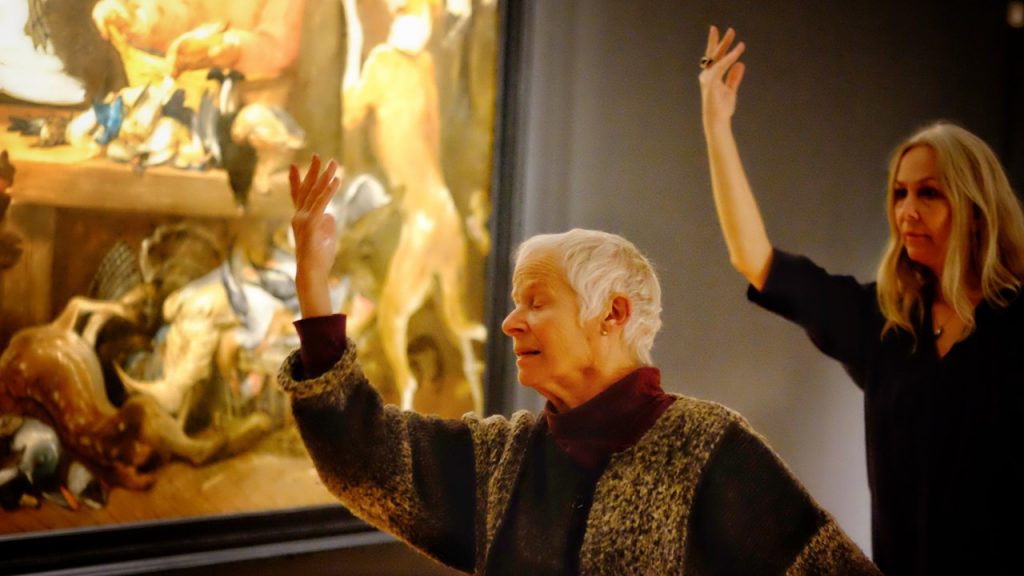
As the session approaches the end, the facilitator asks how has that been, how do you feel now we have spent time together with this painting? Here are some of the responses we have received from participants, expressing a really heartfelt and deep appreciation of having spent time together, looking, discussing and immersing in art:
“I enjoyed listening to everyone’s thoughts and it’s brought back so many memories of happy holidays.”
“I love this painting, I’ll have it on my wall, I feel very relaxed very restful”.
“I enjoyed looking and I enjoyed talking to everyone and it’s been lovely imagining us all together.”
“It’s one of those things you see a picture and mostly you look at it quickly; you don’t really take it in, but when you take time to look at it in detail, it’s fun and I found myself out in the fields, it makes me feel richer, I’m actually observing my world, it helps me take time to look again at what’s around me. Now I really love it.”
“I think its fab, it’s so of the moment and with our circumstances it makes me feel happy”
“I’m struggling at the moment; I’m having a really tough time. It’s been good to escape into this painting.”
“We’d go together to the bottom of the hills and slowly climb to the top and it would be fresh air, freedom and wonderful.”
“I enjoyed it, it’s lifted my spirits, it’s distracted me and it’s nice to talk to everyone.”
“”Like all the pictures I bring back from the Museum I continue to look at them and they have a whole story now.”
Five minutes before the conference call is due to end the Phone Co-op gives us a gentle reminder, this allows everyone the time to share any final meaningful thoughts and say goodbye to each other. This also allows us as facilitators, space to round off the session in a way that responds to participants’ moods on the day. At the end of one session where the group’s overall mood was a little subdued, Filipa invited them to wish one another something really lovely, one word for each other, which we could hold like a bouquet of words. They shared “tranquillity, serenity, peace, happiness, comfort.” It’s important to adapt to the nuances of the individual groups, it’s important to give everyone time to leave well.
From my personal perspective this has been and will continue to be an incredible experience. As I sit and listen and record their thoughts and feelings, it’s like listening to a beautiful radio programme, in which a group of friends are sitting in the next room, talking together about the most amazing experiences, be those real or imagined. It all feels very natural, very connected, they are all going through a shared and often difficult daily life experience and they value the time together to enjoy the shared experience of looking, engaging and talking about art. They are very supportive of each other and look forward to the time when they can see the paintings in the museum, but until then they all express that they look forward to the next time we talk.
This part of our practice to engage with our groups has emerged from an extraordinary circumstance. But I think now we have adapted to this alternative way of connecting we can see there is real merit and potential, in the future to continue to reach out to other groups who for different reasons find accessing the museum difficult, but would welcome the opportunity to take a journey through art.
Dance and Time with the Museum is funded by Arts Council England, Cambridge City Council and the National Lottery Community Fund through the Building Connections initiative which aims to address the challenge of loneliness in society.



